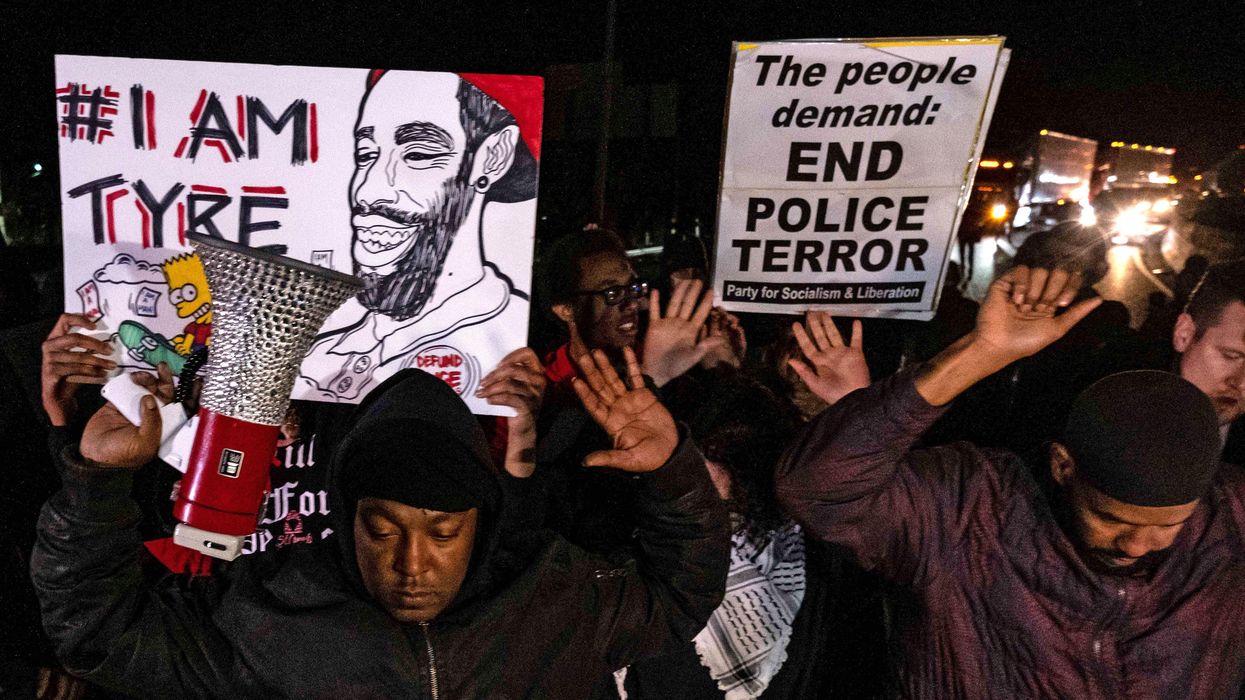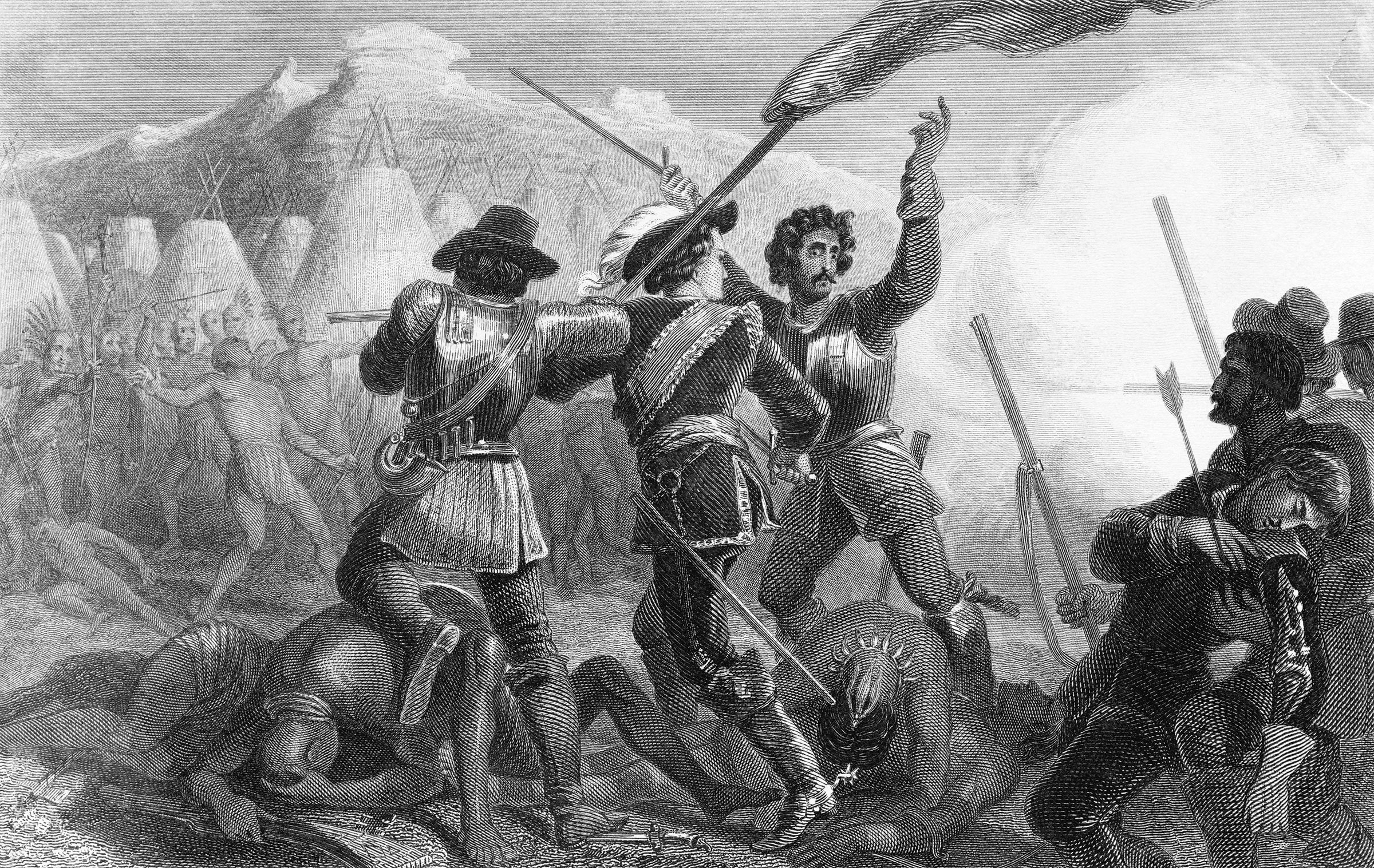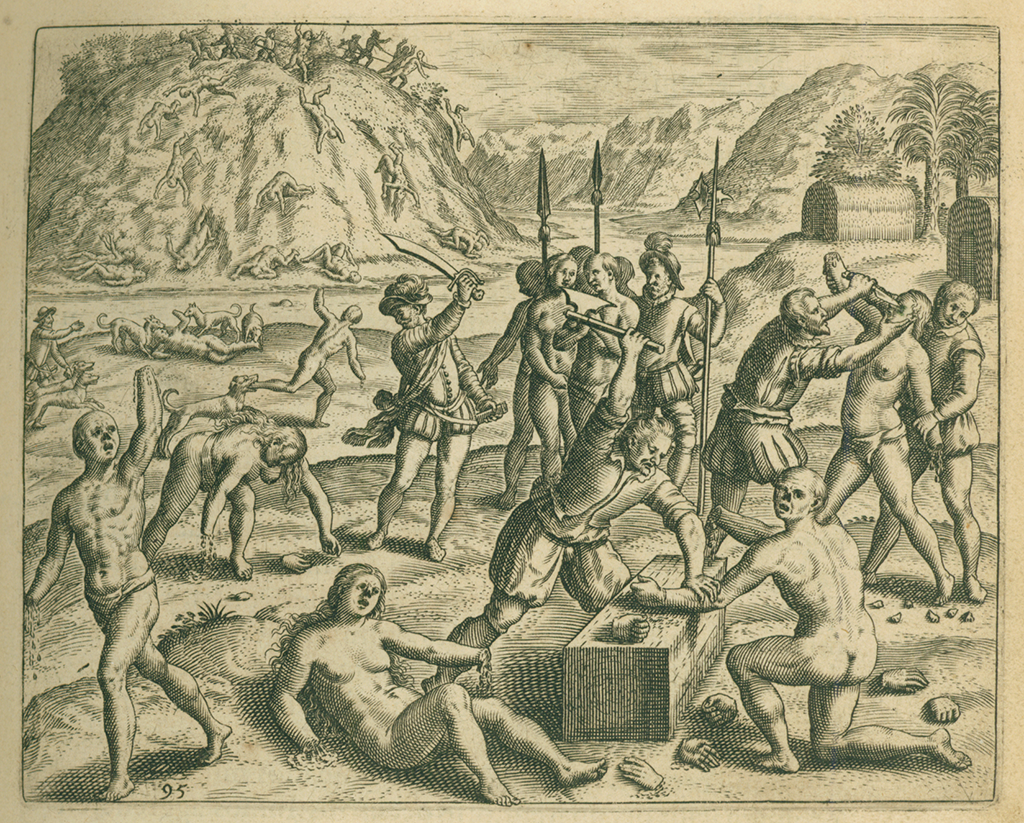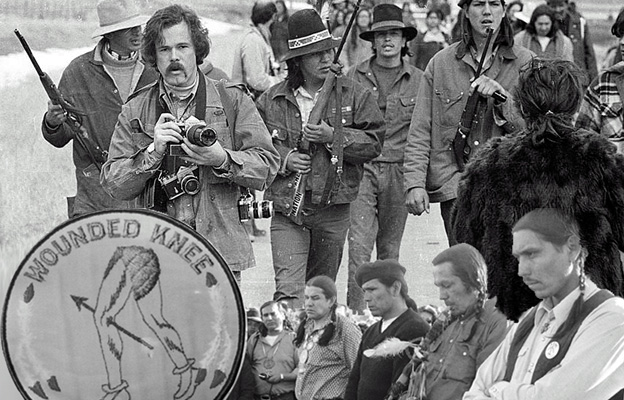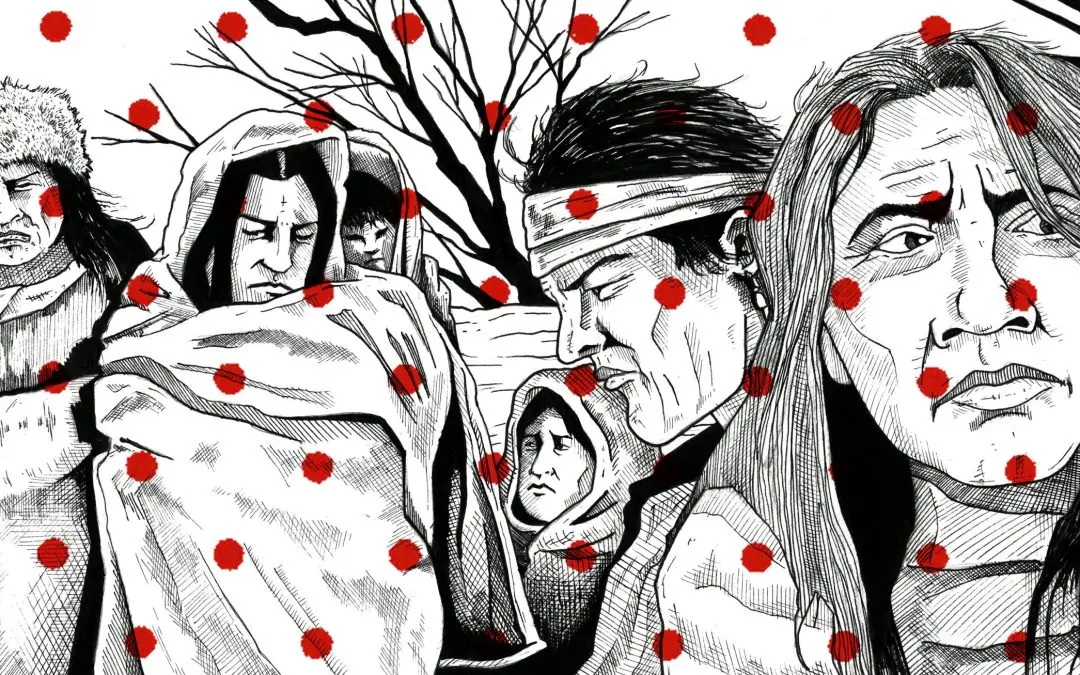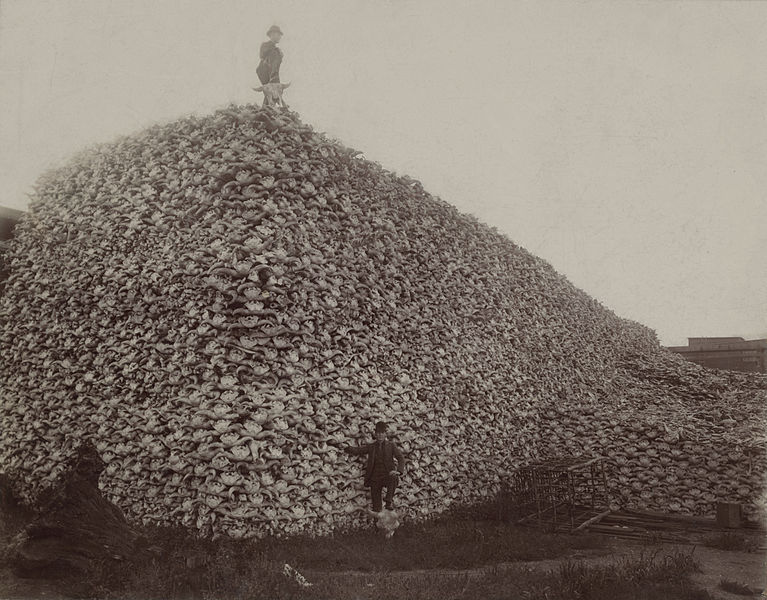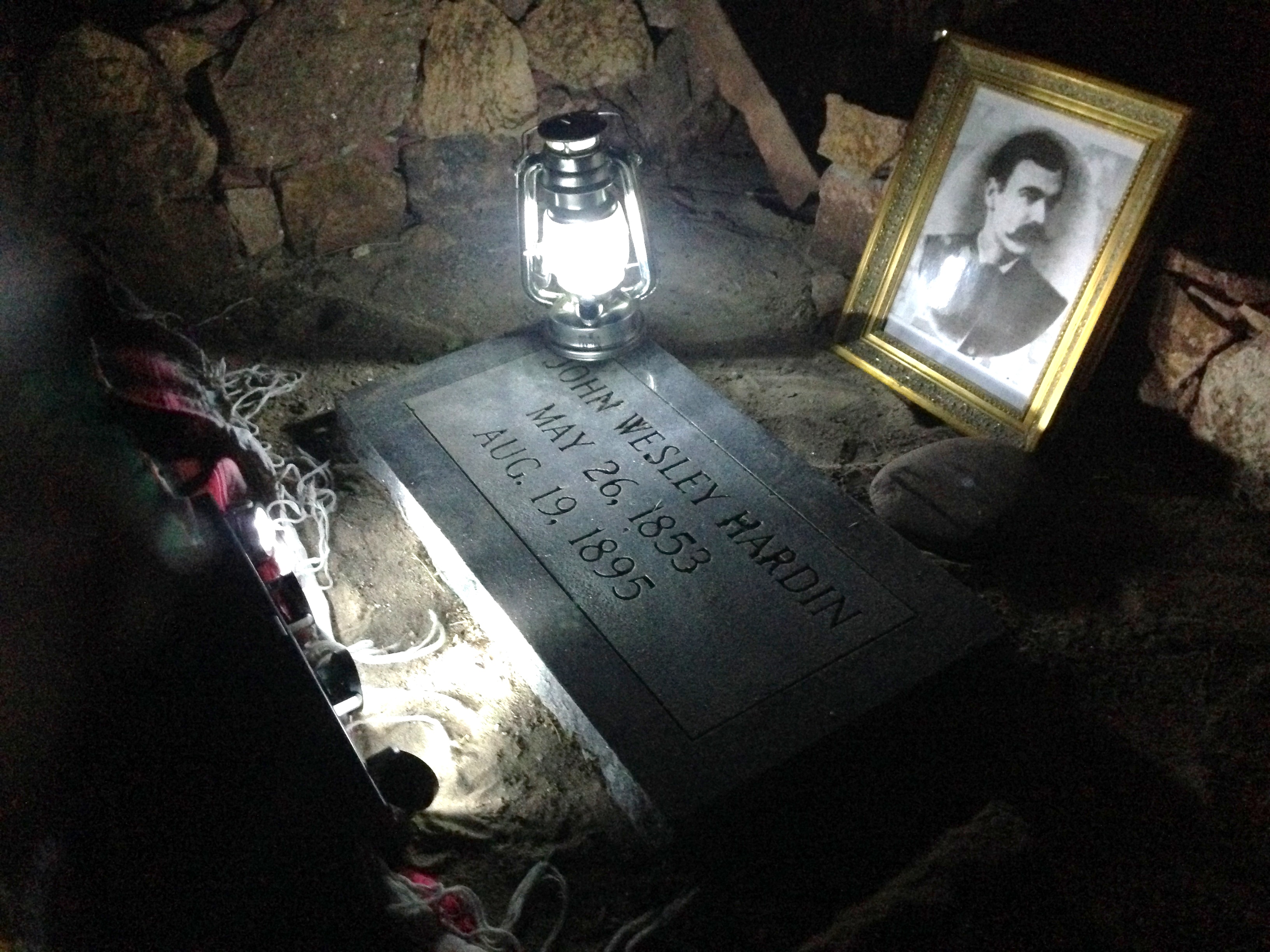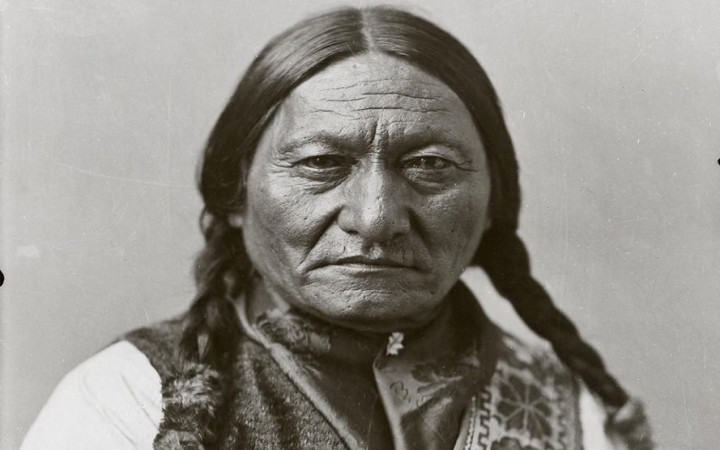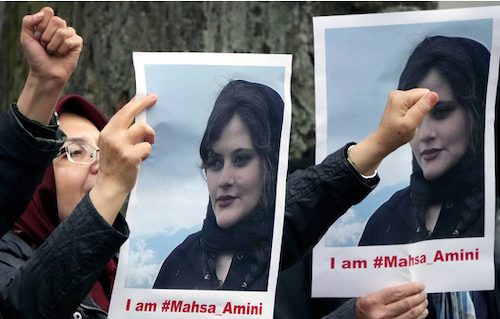Protesters in Iran are continuing to demand justice for Mahsa Amini, the 22-year-old Kurdish woman who died in the hands of the so-called morality police, as well as envisioning a political future beyond the Islamic Republic. The Norway-based group Iran Human Rights estimates at least 154 people have been killed since the protests began. “We saw women, really, what it seemed like for the first time, putting their bodies in direct confrontation with the police,” says Nilo Tabrizy, writer and video journalist at The New York Times. “Today’s movement is not calling for reform. Today’s movement is calling for a new vision of politics … with women at the helm of it,” says Narges Bajoghli, professor of anthropology and Middle East studies at Johns Hopkins University.
AMY GOODMAN: “Woman! Life! Freedom!” That’s the rallying cry in Iran and cities around the world as protests continue demanding justice for Mahsa Amini, the 22-year-old Iranian Kurdish woman who died after she was detained by Iran’s so-called morality police for allegedly wearing her headscarf improperly. Amini died on September 16th. Protests broke out the next day. The Norway-based group Iran Human Rights says at least 154 people have been killed since the protests began in Iran nearly three weeks ago. In a new report, Human Rights Watch has accused Iran’s security forces of using shotguns, assault rifles and handguns against peaceful protesters. The full extent of the protests or the security crackdown remains unknown, as the Iranian government has disrupted internet access in parts of Iran and blocked some messaging apps.
But some video of the protests continue to get out. This video, obtained by Reuters, shows a group of female students heckling a member of an Iranian paramilitary force, known as the Basiji. The female students are heard chanting, “Basiji, get lost!”
PROTESTERS: [translated] Basiji, get lost! Basiji, get lost! Basiji, get lost! Basiji, get lost! Basiji, get lost!
AMY GOODMAN: We begin today’s show with two guests. Narges Bajoghli is an anthropologist and professor of Middle East studies at Johns Hopkins University. She’s the author of Iran Reframed: Anxieties of Power in the Islamic Republic. Her latest piece for Vanity Fair is headlined “’Woman, Life, Freedom’: Iran’s Protests Are a Rebellion for Bodily Autonomy.”
Also with us is Nilo Tabrizy. She is an Iranian-born video journalist who works at The New York Times. Her most recent piece is titled “What Video Footage Reveals About the Protests in Iran.”
Let’s go to those pictures first. Nilo, if you could start off by talking about this project at The New York Times and what the video shows?
NILO TABRIZY: Thank you so much, Amy.
So, we examined videos that primarily were coming out in the first week, week and a half of the protests. That’s when the internet connection was not as disrupted as what we’re seeing right now. So, we saw multiple things, and I can kind of boil it down into three main visual trends that we saw.
We saw that protesters were targeting symbols of the state. So, we saw protesters tearing down posters of Ayatollah Ali Khamenei; the founder of the Islamic Republic. We saw protesters attacking police stations and government building complexes.
And another main thing that we saw, which has been very much the topic of conversation about these protests, was really seeing women in the lead. So that’s everything from the defining images of seeing women burning their hijabs in public to women cutting their hair as a form of protest. And as well, we heard a lot of women-centric slogans. Like you just said, ”Zan, Zendegi, Azadi,” that’s very much been at the forefront of these protests.
And as well, something that Dr. Bajoghli has written about, we saw women, really, what it seems like for the first time, putting their bodies in direct confrontation with the police. So, they’re, you know, actually going to physically fight them, going up to them, being very bold. This really stood out to us, and we saw that in multiple places across the country.
And the last thing that we saw is just these protests have been so widespread. So we’ve seen solidarity among social class, different regions, different ethnic backgrounds. And something that really stood out to us for that is we saw protests in religious and traditionally conservative cities that are regime strongholds, like Qom and Mashhad, where we can hear protesters saying, “Death to the Islamic Republic.” And as well, we saw — we could hear the chant, ”Zan, Zendegi, Azadi,” which originates from Kurdish. We heard people chanting it in Kurdish in Tehran, so well outside of Kurdistan, which, to us, really showed, you know, the solidarity across the country.
NERMEEN SHAIKH: And, Nilo Tabrizy, if you could also talk about the state symbols that have been attacked during these protests and the significance of those state symbols? And in addition to this main chant, ”Zan, Zendegi, Azadi” — “Woman, Life, Freedom” — there have also been others. What are the ones that have really caught on?
NILO TABRIZY: Sure, absolutely. So, in terms of state symbols, we’ve seen, like I said, tearing down the poster of Khomeini. We’ve seen protesters tear down pictures of Ali Khamenei, the current supreme leader. We’ve seen them tear down posters of Soleimani. And seeing this is just very — you know, it’s a very bold thing to see. There’s so much repression in the state that seeing people tear down these symbols really gives us a visual understanding of what these protests are towards. It seems like they are very much calling for, you know, a complete restructure and a complete dissatisfaction with the current order.
And as well, in terms of the other chants that have caught on, yeah, I mean, the main ones that we kept seeing are ”Zan, Zendegi, Azadi.” We are seeing, you know, “Death to the Islamic Republic,” “Death to Khomeini,” really calling for a downfall of the system. Those were the main ones coming through.
And this is something that, you know, perhaps Dr. Bajoghli might have her thoughts on, but something that we saw was these chants are very much women-centered. So, in 2009, for example, when Neda was killed in the Green Movement protests, she very much became a symbol of state repression. There were chants at that time that chanted her name. This time around, we’re not necessarily hearing “Mahsa,” “Zhina,” her name so much. We’re really hearing ”Zan, Zendegi, Azadi.” And we’re also hearing chants that particularly had male references translated into women-centric references. So, the chant, for example, that we might have heard in previous protests is “I will defend,” you know, “I will seek revenge for my brother”; we’re hearing that “I will seek revenge,” or “I will defend my sister.” So, we’re really hearing that translated into a women-centric chant to reflect the movement.
NERMEEN SHAIKH: Professor Narges Bajoghli, your piece for Vanity Fair is headlined “’Woman, Life, Freedom’: Iran’s Protests Are a Rebellion for Bodily Autonomy.” In the piece, you make a very interesting point, which is that Mahsa Amini, a Kurdish girl around whom these protests began, around her death, that her real name, Zhina, a Kurdish name, could not actually officially be registered under Iranian law. So, could you explain why that is, and the significance of these protests beginning around the death of this young Kurdish woman?
NARGES BAJOGHLI: Kurds in Iran have been repressed both pre-revolution and post-revolution. A lot of the ethnic minorities in Iran, especially those who live in the border areas, have faced both severe repression, as well as very few resources go into those areas of the country for development, for job opportunities, for all of those things. And many Kurds, as well as some other ethnic minorities in Iran, are not allowed to teach their languages in schools. And Zhina’s name could not be registered under Iranian law, because under Iranian law only certain Persian and Islamic names can be registered formally. And so they had to register her Persian name, Mahsa, instead of her Kurdish name, Zhina.
It’s significant that this uprising has started over the death of a Kurdish girl who was visiting Tehran. She didn’t live in Tehran; she lived in Saqqez, a town in Iranian Kurdistan. And, you know, these issues over identity and ethnicity have often been sort of faultlines that states have used in Iran to not allow solidarity to take place across the country. And what we see is that a nation rose up in defense of the death of a Kurdish girl, and the central slogan, as Nilo has been mentioning, of this entire uprising is a slogan that originates in Kurdish, comes from a militant feminist Kurdish background, from Turkey, first of all, and then gets translated into the Kurdish women fighting in Syria against ISIS in 2014 and 2015, and then it travels around, and it comes to Iran. And the reason that it becomes a national cry is because during her funeral you can hear mourners chanting that slogan. It gets captured on video, it circulates on social media, and then it spills out into Persian all across the country.
AMY GOODMAN: Professor, in your piece in Vanity Fair, you write, “It is only fitting that it’s Iran’s feminist revolution and the country’s young generations that are on the front lines of battles for bodily autonomy and sovereignty. For four decades, Iranian women and queers have borne the brunt of a political system predicated on their subjugation through daily policing and criminalization. They’re now showing the world — despite the severe repression and potential death they face — how to fight back, like feminists.” Take it from there.
NARGES BAJOGHLI: Yes. So, this is really, at its core, a fight for women and queer folks to have choices over their bodies. So, what’s really important, as Nilo was providing the context, is that the Islamic Republic has implemented laws that are severely restrictive for women since the very beginnings of the 1979 revolution and the start of the state. And what’s significant here about what happened to Amini is that she was caught at the hands of the so-called morality police, which are a police force that are a daily occurrence all across Iran. All women have had some kind of interactions with the morality police, and families, including religious ones, have had some form of interaction with these police, because their daughters may not be veiling as religiously as the mothers have. And so this is something that women are dealing with every day. When Amini was taken, at first ended up in a coma and later died from the injuries that she sustained, what we are seeing is that the ways in which women in Iran have been resisting every single day against these restrictions over the past 40 years, we now see this as a rupture in collective action. So, it’s not surprising to me that sort of this generation’s and, in our global moment, our generation’s first big feminist uprising, that is militant in style, is taking place in Iran on this level, because Iranian women have over four decades of experience of daily acts of resistance against patriarchical laws and against partriarchical norms.
And so, as conservative movements are rising across the world, as we see more and more laws that are coming down against women — and, you know, I think it’s worth noting that conservative movements, when they rise, and religious movements, when they rise, first and foremost, they go after the rights of women. And so, right now I think even though traditional media has been very slow to cover this uprising, it’s been internet users all over the world that have made hashtag #MahsaAmini trend. And that’s the reason we’re all having this conversation today. So it’s striking a chord with people all over the world who are, in one way or another, experiencing, either once again or a continuation of, increased patriarchical control over women’s bodies. And so, the protests in Iran are capturing our attention because we’re seeing, in real life, how women are putting their lives on the line and are refusing to comply any longer. You know, power and patriarchy require that we comply. And so, we’re seeing now young women and women across Iran who are just saying, “I will no longer comply with this.”
NERMEEN SHAIKH: Professor Bajoghli, I want to ask you about what you see as the potential outcome of these protests. I was listening to an interview on the BBC with renowned Iranian graphic novelist Marjane Satrapi, who said that, irrespective of what happens, the Islamic Republic is now a corpse. But you write in your piece that — in your Vanity Fair piece that the “street rebellions may or may not ‘succeed’ in toppling the regime or changing the laws — but that is almost beside the point.” Can you explain what you mean by that, and what the effects of these protests might be, even if the regime doesn’t fall?
NARGES BAJOGHLI: Right. So, we don’t — you know, I don’t have a crystal ball. I can’t predict what’s going to happen. But at the moment what is very significant about these protests is that women are taking control back from the state. They are saying, “We will not allow you to define how we come out onto the street. We will define this for ourselves.” And so, what is significant here is that, you know, when you rise up against powers and things that have been around for millennia, like patriarchy, which is, you know, one of — unfortunately, one of the universal values that we see around us, this is something that it takes a — we have to be able to envision that we can live in a society without that. And so, what that requires is a representation of resisting that kind of power. And what we have now in Iran, for Iranians, which is extremely significant, is that we have, on a daily basis now, various forms of civil disobedience which are about standing up against patriarchical power. And we’re seeing more and more slogans also that say, “It might not be always be the morality police, but the morality police could also be called your father.” So it’s going to the core of patriarchy in the state and patriarchy in the home. And it’s really — and that’s what makes this feminist to its core. It’s saying that in order for us to have any kind of freedom, political or otherwise, women need to be free.
And so, the long-term consequences of this are significant, because what we see also in Iran is that young girls in schools — elementary school students, middle school students, high school students — are, as you guys showed on your piece, are throwing out those who have enforced these laws in their schools for over four decades. And so, this is just the start of women and girls seeing their power, seeing it reverberate, and then seeing it — and seeing so many people around the world showing solidarity to it. And that is significant for Iran, but it’s also significant for all of us as we’re sitting here contemplating how we’re going to be fighting back against all of these laws that are trying to restrict our bodies now. We are now seeing a very confrontational, militant form of feminism rising up from Iran showing us how to do that.
AMY GOODMAN: During a speech in the European Union Assembly, a Swedish member of the Parliament, Abir Al-Sahlani, cut her hair in solidarity with the Iranian protests Tuesday evening in Strasbourg, France.
ABIR AL-SAHLANI: The hands of the regime of the mullahs in Iran is stained with blood. Neither history nor Allah or God Almighty will forgive you for the crimes against humanity that you’re committing against your own citizens. We, the peoples and the citizens of the EU, demand the unconditional and immediate stop of all the violence against the women and men in Iran. Until Iran is free, our fury will be bigger than the oppressors. Until the women of Iran are free, we are going to stand with you. ”Jin, Jiyan, Azadi.” Woman! Life! Freedom!
AMY GOODMAN: There has been dramatic video of solidarity with the protests in Iran all over the world. In addition to the protests drawing thousands and thousands of people, including in Los Angeles, which has a very large Iranian American community, and the Swedish MP that we just played, prominent French actresses, from Juliette Binoche to Isabelle Huppert, also posted a video online cutting their hair. Nilo, if you can talk, since you’re examining these video, one, about the video getting out of Iran, but, two, the video of these actions of solidarity? How easy is it for people in Iran, for the women to see this solidarity, when apps are being shut down, etc.?
NILO TABRIZY: Absolutely. So, yes, the internet crackdown is happening right now. I have a hard time reaching my family members. But Iranians are really smart. They know how to move and maneuver around state repression. It’s something that they have been doing for years. So there are windows and ways in which that they can see the outside world, and how videos are still getting sent out to people like me who are watching and monitoring. Videos are very much our primary window into what’s going on in Iran, given the repression of domestic journalists and international journalists that are — that once were accredited to be based there. So this is really the primary way that we’re seeing it.
And seeing these videos of women in Iran cutting their hair, it’s very moving. It’s something we focused on in our piece. And when we spoke with one of our experts, Reza Akbari, about it, he said it’s very much the symbol that is unique to these protests. It’s women saying, you know, back to the morality police, back to the state, “If this is what’s bothering you,” in a sarcastic, bitter way, “let me cut it off.” It’s very powerful, what they’re doing.
And something that really caught my eye when we were watching the videos coming out, specifically with cutting hair as a form of protest, is there was a video of a protester’s funeral. So, often in the past when protesters have been killed by the state, they’re very much dissuaded from being public at all about it. It’s a quiet burial and things like that. But we saw a video broadcast from one of these funerals that was put on social media that you can see this open grieving, that you can see people grieving for their young family member who was killed in these protests. One of her family members begins to cut her hair over the casket, and so making — you know, not only making this funeral a public statement, which in itself is very new, shocking and bold in these protests, but adding that visual of cutting her hair on top of it is just — yeah, it’s incredibly moving to see these images.
NERMEEN SHAIKH: Professor Bajoghli, your response? What do you think accounts for the extent of global solidarity in this very visual and open way, not just demonstrations but so many women cutting their hair and posting it online? And if you could compare this also — in 2009, you were in Iran during the protests called the Green Movement. What differentiates that one from this one?
NARGES BAJOGHLI: Sure. So, to answer your first question, I think the reason this is reverberating so broadly across the world is, again, we’re feeling lots of frustrations all around the world with not just the rise of conservative power but also just the concentration and the monopoly of power around the world, whether it’s by our, you know, different states that we all live in, corporations that we’re — you know, like all the applications that we all use and the ways in which that they are owned by very, very few companies. And so we’re in this moment in which especially those in the millennial generation and what we call Generation Z are trying — they are showing outbursts of rebellion and just sort of being like “It’s enough” towards different forms of power that we have around us, such as the hashtag #BlackLivesMatter movement, hashtag #MeToo movement, hashtag #NiUnaMas in Latin America, and so on and so forth. And this is a moment that is also another one of those where it crystallizes all of these frustrations, and that’s one of the reasons I think it is catching on and showing so much — there’s so much solidarity around the world.
As far as the difference between this and the 2009 movement in Iran, the Green Movement in Iran, that movement was still very much within the bounds of politics of the Islamic Republic. It was a movement for electoral integrity and for reform of the system. Today’s movement, it’s not calling for reform. Today’s movement is calling for a new vision of politics. It’s calling for a vision of politics that is about life and not destruction, and that is about the future and women at the helm of it. That is significantly different. The protesters today in Iran, they are — in many ways, they’ve moved beyond the state. This is no longer about the state. This is about trying to create a new political imagination of what comes after the Islamic Republic. And so, this is why this is such a significant moment. It’s not that tomorrow the regime is going to come toppling down, but it’s that for the first time we have a national movement of sorts that has moved beyond the parameters of the state, is no longer looking to reform the state, and that is calling forth a completely new vision for politics in Iran.
AMY GOODMAN: Well, Narges Bajoghli, we want to thank you so much for being with us, anthropologist, professor of Middle East studies at Johns Hopkins University in Baltimore, author of Iran Reframed: Anxieties of Power in the Islamic Republic. We’ll link to your piece in Vanity Fair headlined “’Woman, Life, Freedom’: Iran’s Protests Are a Rebellion for Bodily Autonomy.” And Nilo Tabrizy, I want to thank you in Vancouver, journalist and writer, currently a video journalist at The New York Times, where your most recent piece is titled “What Video Footage Reveals About the Protests in Iran.”
We’re going to end this segment with the renowned political activist, scholar and author Angela Davis, who expressed her solidarity with protesters in Iran in a video posted on social media. This is an excerpt.
ANGELA DAVIS: I want to offer my heartfelt solidarity to all those in Iran who have decided that Mahsa Amini’s death at the hands of the Islamic Republic shall not be in vain. As one of the many scholar activists in the United States who has identified for a very long time as an ally of progressive and radical movements in Iran, I offer my condolences to Mahsa Amini’s family and friends, and I say thank you to all those whose militant refusals directed at the regime, along with its morality police, have created the occasion for Mahsa Amini’s name to reverberate around the world. In her name, people are standing up and are saying no to the repression meted out by the Islamic Republic. … They are harbingers of hope, of hope not only for the people of Iran, but for all of us who want an end to racial capitalism, misogyny, economic repression, and who strive for more habitable futures for all beings on this planet. Long live Mahsa Amini.
AMY GOODMAN: Political dissident, activist, author Angela Davis, sending her message of solidarity with the women of Iran.
Coming up, we’ll also hear from India. And as India’s prime minister offers to help efforts to end the war in Ukraine, we’ll speak to the prominent Indian activist Kavita Krishnan. Stay with us.
[break]
AMY GOODMAN: “Because Of,” “Baraye,” by the Iranian singer Shervin Hajipour, which has become the unofficial anthem of the Iran protests. The song’s lyrics are taken entirely from messages Iranians have posted online about why they’re protesting. Shervin Hajipour posted the song September 28th and received 40 million views before he was forced to take it down. He was arrested the next day, was released earlier this week on bail. He’s awaiting trial.
